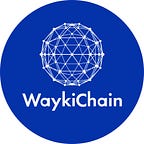Expanding the DeFi Ecosystem: WaykiChain WGRT Explores the Integration of Real-World Assets (RWA)
As blockchain technology and decentralized finance (DeFi) rapidly evolve, the tokenization of Real-World Assets (RWA) is increasingly becoming a potential trend. The introduction of RWA not only broadens the asset base of the DeFi ecosystem but also offers asset holders more market opportunities and efficiency. As a public chain project committed to promoting the development of blockchain application ecosystems and decentralized governance, WaykiChain is naturally exploring and adopting beneficial economic logic that aligns with its growth.
RWA, or Real-World Assets, refers to the tokenization of physical world assets such as real estate, stocks, and bonds through blockchain technology, enabling their circulation and trading within the DeFi ecosystem. The introduction of RWA addresses the loss of market opportunities and efficiency in the traditional financial system (TradFi) due to the presence of intermediary institutions.
In the future, the successful integration of RWA into WaykiChain could significantly enrich the types of assets in the WGRT ecosystem. For instance, by purchasing U.S. Treasury bonds using stablecoins as a practical application of RWA, investors can gain exposure to high-quality assets in the traditional financial market without owning the full rights to the bonds. To tokenize U.S. Treasury bonds, their value must first be verified off-chain. WaykiChain can commission third-party organizations to assess the bonds, confirm ownership, and design measures for changes in bond rights. Subsequently, this bond information is digitized and put on the blockchain. In more specific terms, the relevant data of the bond will be tokenized and transmitted through the chain.
This diversification not only attracts a broader range of investors but also offers a more diversified investment portfolio, reducing overall market risk. Simultaneously, diversified asset types effectively enhance market liquidity. More asset holders mean higher trading frequency and larger trading volumes, directly reducing transaction costs and facilitating easier capital flow within the market.
Of course, the introduction of RWA involves more complex governance structures and compliance requirements. These complexities actually provide the WGRT ecosystem with a high-quality governance testing ground. More participants and more complex governance needs will drive more innovation in governance mechanisms and transparency within the WGRT ecosystem.
As a bridge connecting traditional finance (TradFi) and decentralized finance (DeFi), RWA also allows the WGRT ecosystem to attract more participants from the traditional financial market. This not only brings more capital inflow into the ecosystem but also significantly improves the overall utilization rate of assets. More capital and participants mean a more robust WGRT ecosystem, promoting its long-term sustainable development.
As WaykiChain continues to deepen and expand in the blockchain and DeFi sectors, we have reason to believe that the introduction of RWA will not merely be a simple asset expansion. It will be another milestone for WaykiChain, redefining assets, liquidity, governance, and even the entire DeFi ecosystem’s essence. WaykiChain will continue to dedicate itself to research and development in this field, collaborating with global partners and users to pioneer a new chapter in decentralized finance.
